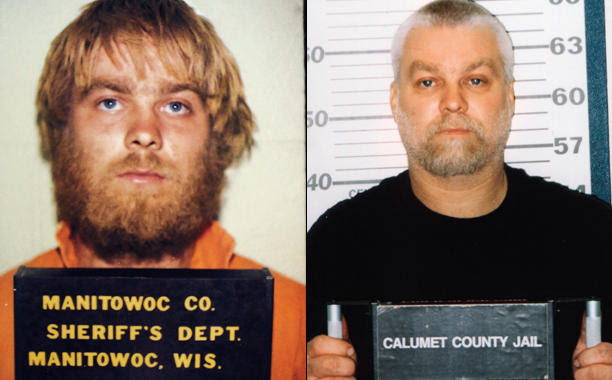Halfway through episode four of Making A Murderer there is a brief clip showing a television news producer who explains that, “Right now, murder is hot. That’s what everyone wants. That’s what the competition wants and we’re trying to beat out the other networks to get that perfect murder story.” Her candid comments were made in the middle of the trial of Steven Avery and his nephew, Brendan Dassey, who were charged and convicted of the murder of local photographer Teresa Halbach in rural Wisconsin in 2005. Avery’s defence was that he was framed for the murder and that Teresa Halbach’s actual murderer is still at large. Making a Murderer, which examines that court case and an earlier case in which Avery was wrongly convicted of rape, has enjoyed stunning success on Netflix since it premiered in December of last year. It has become a pop-culture and social media phenomenon.
Making a Murderer continues to attract daily news articles two months on from its release. Celebrity news websites such as Popsugar, RSVP Magazine and Her.ie have covered news stories relating to Steven Avery and various other people involved in the trial in the celebrity news section. His two defence lawyers, Dean Strang, Jerry Buting have become icons; Elle published an article online last month with the headline “Deconstructing your Sexual Attraction to ‘Making a Murderer’s Dean Strang in 13 Steps.” An article in the UK’s Daily Telegraph newspaper even suggests that the documentary has influenced Rhianna’s make-up designer, Adam Selman.
Documentary or just another drama series?
Although the documentary has helped to shine a harsh spotlight on problems within the American justice system, it has been often discussed as though it is a drama series, and this is problematic. It is not uncommon to read the term “Spoiler Alert” at the beginning of articles about the documentary and to see comments referring to the people involved in the trial as “characters.” This is problematic because Making a Murderer is, of course, a true crime documentary, involving real people; it is not merely entertainment, although people talk of it as if it is an episode of Judge Judy.
When there is a murder trial (regardless of whether the defendant has been falsely accused one or not), there must also be a murder victim. If new evidence comes to light and Avery and Dassey are granted a retrial and duly freed, it will not change the fact that Teresa Halbach was murdered. It seems crass to talk about the participants in the trial as celebrities and the various theories of what happened whilst the actual murder victim is relegated to the side-lines.
To be fair, this is something that the mainstream media is guilty of as well. During the trial of Graham Dwyer, who was convicted of murdering Elaine O’Hara last year, salacious details were pored over by the media. The Oscar Pistorius trial was famously partly televised and members of the public were able to tweet their reactions instantaneously. In both cases, the murderers received much more attention than the victims and this makes me uncomfortable.
However, in the case of Oscar Pistorius, people were able to see flaws in the judgement and engage in a debate about the South African legal and justice systems. Pistorius’ conviction was upgraded to murder on appeal and he is awaiting re-sentencing. Making a Murderer also tries to ignite debate regarding wrongful convictions in the US justice system.
Fundamentally biased
However, it is a documentary that, like any series in the genre, needs to sell to a distributor and needs to captivate a wide audience. It is carefully edited and various techniques are used to persuade the viewer that Manitowoc County Sheriff’s Department planted evidence to frame Avery for murder. The most obvious example of this is in Episode five when Sgt Andy Colbourn is questioned over a phone-call regarding Halbach’s vehicle licence plate. His answers to Dean Strang’s questions raise suspicion but the film-makers use music with the clip to further guide the viewer’s emotional reaction. The show leaves out evidence from both the defence and the prosecution due to time constraints. There is enough bias towards Avery’s innocence, however, to make one pause for thought.
For what it is worth, I do believe that Steven Avery and Brendan Dassey should be granted a re-trial. The documentary certainly raises doubts about the fairness of the judicial process and the evidence used against them. The interrogation of Dassey was particularly shocking and Len Kachinsky, the initial lawyer appointed to represent him, definitely does not come across well on screen. However, that does not mean that I think that the defendants should be automatically pardoned, as some commentators are clamouring for.
The fact that these issues of justice have been raised in front of a global audience is a highly positive thing and hopefully will put enough pressure on prosecutors in future cases. But due process must be followed. Trial by social media is not any better than the bungled investigation prior to Avery’s first, completely incorrect, conviction. The correct process involves a fair, robust trial in a courtroom.
Making a Murderer has provoked a storm of reaction which does not seem likely to die down any time soon. It has encouraged debate about the justice system and police corruption. However, there also needs to be an urgent debate about how murder victims and their families are treated by the media and on social media platforms. As the storm of public opinion continues to rage on after two months, it is prudent to consider all the facts and to remember that Teresa Halbach is the barely-remembered victim in “that perfect murder story.”







